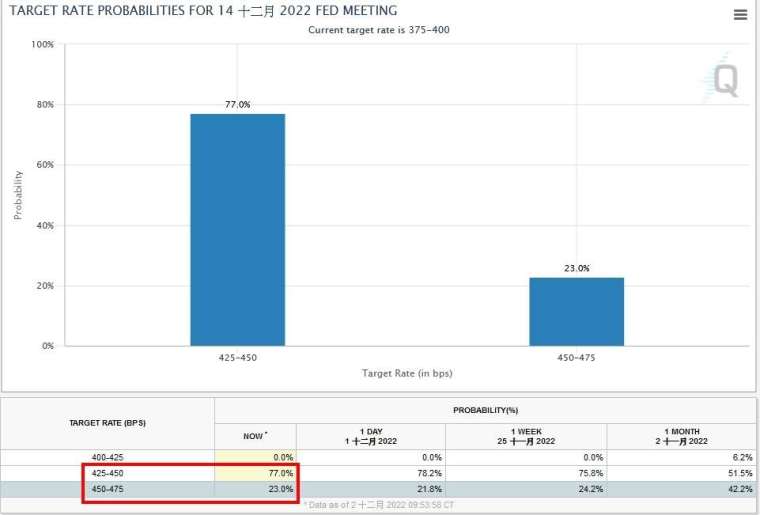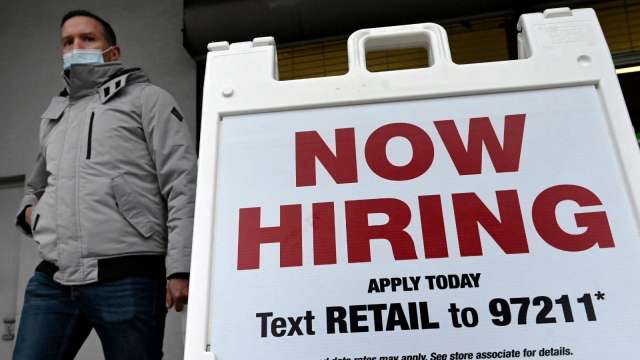The US Department of Labor announced on Friday (2) that 263,000 new nonfarm jobs were added in November, far more than the 200,000 market expectations, and the previous revised value was 284,000.The unemployment rate in November it remained at 3.7%. , online Market expectations are still close to a 50-year low. It is worth noting that the growth rate of average hourly earnings accelerated in November, the highest since January this year, indicating that inflation persistent increases the possibility of further interest rate hikes by the Federal Reserve.
Although the Fed has repeatedly raised interest rates aggressively, the US job market is still tight. At the same time, the monthly growth rate of average hourly wages hit a new high in nearly a year, which means that the Fed still needs to continue to raise interest rates to curb inflation. Among them, wage inflation is the most urgent problem to be solved. The problem is that the Fed may further raise the terminal interest rate.
November Nonfarm Payrolls Report:
- New Nonfarm Employment Reported 263,000, Expected 200,000 and Revised Previous Value of 284,000
- Unemployment rate reported at 3.7%, expected at 3.7%, the previous value of 3.7%
- Average weekly workweek 34.4 hours, planned 34.5 hours, prior value 34.5 hours
- Annual growth in average hourly earnings was 5.1%, versus 4.6% expected and 4.9% previously
- Average hourly wages increased 0.6% month-on-month, versus 0.3% expected and 0.5% previously
- Work participation rate reported at 62.1%, expected 62.3%, previous value 62.2%
This is the seventh consecutive nonfarm report this year that has exceeded market expectations. Average monthly nonfarm employment this year was 392,000, compared to 562,000 a month last year.
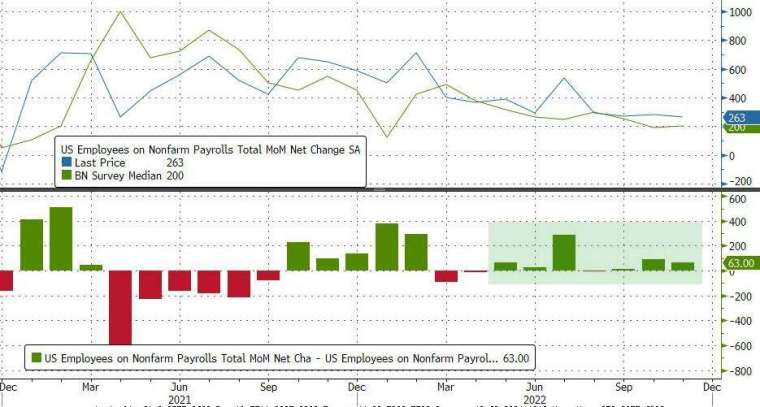
This year’s nonfarm payrolls report beat market expectations for the seventh time in a row. (Image: ZeroHedge)
Looking at the breakdown of the data, the leisure and hospitality, health insurance and government sectors saw the largest increases in new jobs in November, while retail, shipping and warehouses saw declines of the occupation.
Specifically, health care added 45,000 jobs, leisure and entertainment, and restaurants increased by 88,000; public sector employment increased by 42,000, mostly from local governments; employment in the service sector increased by 24,000 people.
Welfare added 23,000 jobs, returning to February 2020 levels; construction added 20,000 jobs, up; information jobs increased by 19,000; manufacturing and finance were both new Employment increased by 14,000 and professional and service industries increased by 6,000; retail, transportation and warehousing decreased by 30,000 and 15,000, respectively.
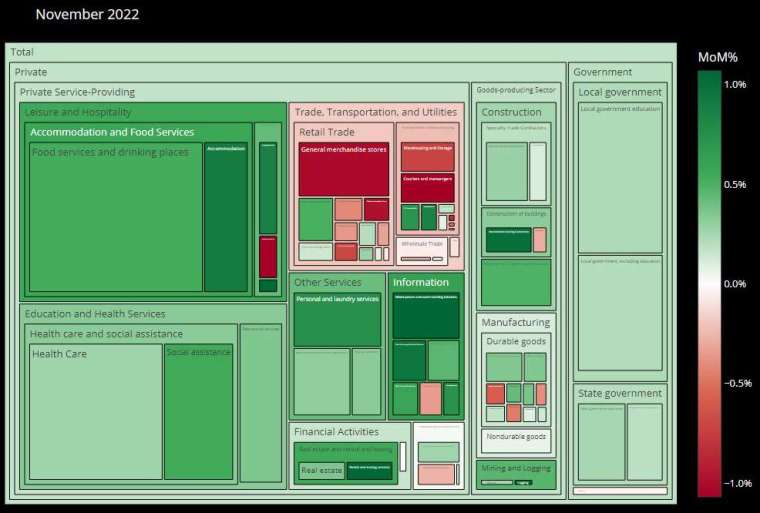
Average hourly wages increase, the pressure of the inflationary spiral intensifies
Report shows wages soared in November, with average hourly earnings rising 0.6% to US$32.82, far exceeding market expectations by 0.3% and higher than the previous revised value by 0.5%. On an annual basis, wages grew by 5.1%. % in November, was 4.6% higher than market expectations, but lower than the revised 5.6%.
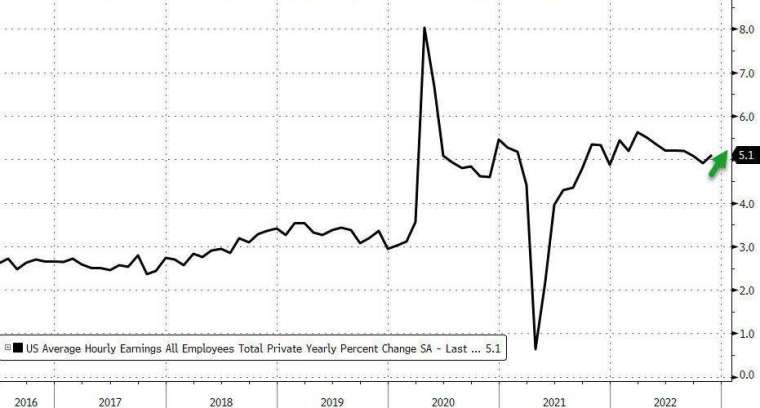
For the Fed, the unexpectedly high increase in average wage growth is obviously bad news, which means that inflationary pressures have increased. At the same time, this is still far from the Fed’s hope of seeing wage growth slow to its pre-epidemic level of 2% to 3%. Fed Chairman Powell stressed in a recent speech that strong wage growth is a good thing, but to make it sustainable, it needs to be consistent with 2% inflation.
Fitch said nonfarm payrolls continued to grow at such a pace that it would do nothing to ease the Fed’s concerns about labor supply imbalances.
The unemployment rate remained at 3.7%, the labor force participation rate decreased slightly
The report showed that the unemployment rate remained at 3.7% in November, in line with market expectations and in line with the previous value, close to a 50-year low. Since March of this year, the rate of unemployment fluctuates within a narrow range of 3.5% to 3.7%.
The labor participation rate fell slightly to 62.1% in November, below market expectations of 62.3%, and the previous value was 62.2%. The month’s average weekly working hours decreased of 0.1 to 34.4 hours.
expert opinion
Matt Maley, chief market strategist at Miller Tabak, said the main problem facing the Fed is wage inflation. Average hourly wage data in the report far exceeded expectations, indicating policy tightening of the Fed will last longer.
Hussain Mehdi, macro and investment strategist at HSBC Asset Management, said good news of strong job market data is bad news for the market, coupled with the overall resilience of the US economy and dogged core inflation, is It’s hard for the outside world to think that the Fed might be in the market. Speculation of a pause in rate hikes in January or February next year is unwarranted.
Callie Cox, US investment analyst at eToro, said November’s nonfarm payrolls report was encouraging for the general public, but not for the Fed, which is desperately trying to control inflation. He further said that the job market is the engine of economic growth, so the US economy has not yet entered a recession, but strong jobs data has provided the Fed with support to keep interest rates higher for a while. longer term, even if the pace of interest rate increases begins to slow down.
Market reaction
Following the announcement, the four major US stock indexes opened lower, with US Treasury yields,dollar indexgo lower. As of midday, the major indices had narrowed their declines since the open.Dow Jones Industrial Averagefell nearly 180 points or nearly 0.5%,NasdaqThe composite index fell nearly 120 points or nearly 1%,S&P 500 indexfell more than 30 points or nearly 0.8%,Semiconductor PhiladelphiaThe index fell nearly 2.3%. US. 10-year Treasury bill yieldAnddollar indexIt continued to rise and eventually the US stock market was up 3.605% and 105.11 respectively.
According to the CME FedWatch Tool, the US federal funds rate futures market estimates that the probability of raising interest rates by 2 yards (50 basis points) in December is 77%, and the probability of raising interest rates by 3 yard (75 basis points)) is 23%%, the terminal interest rate is between 4.75% and 5%.
